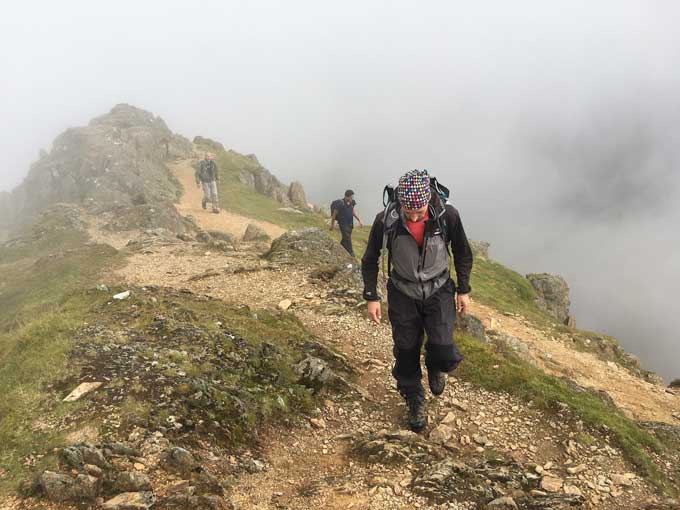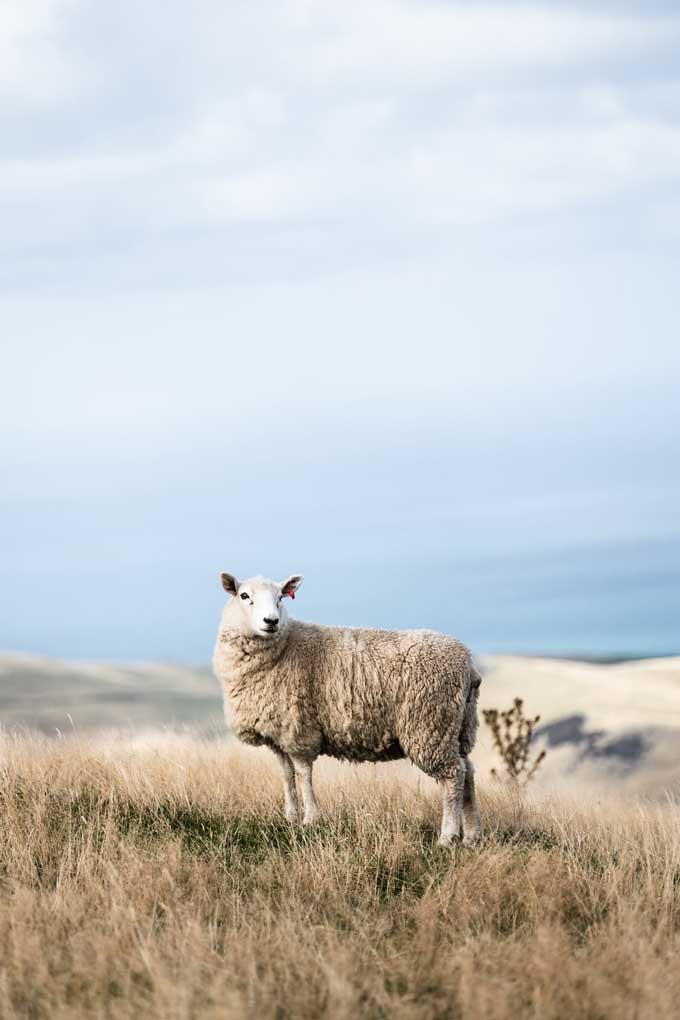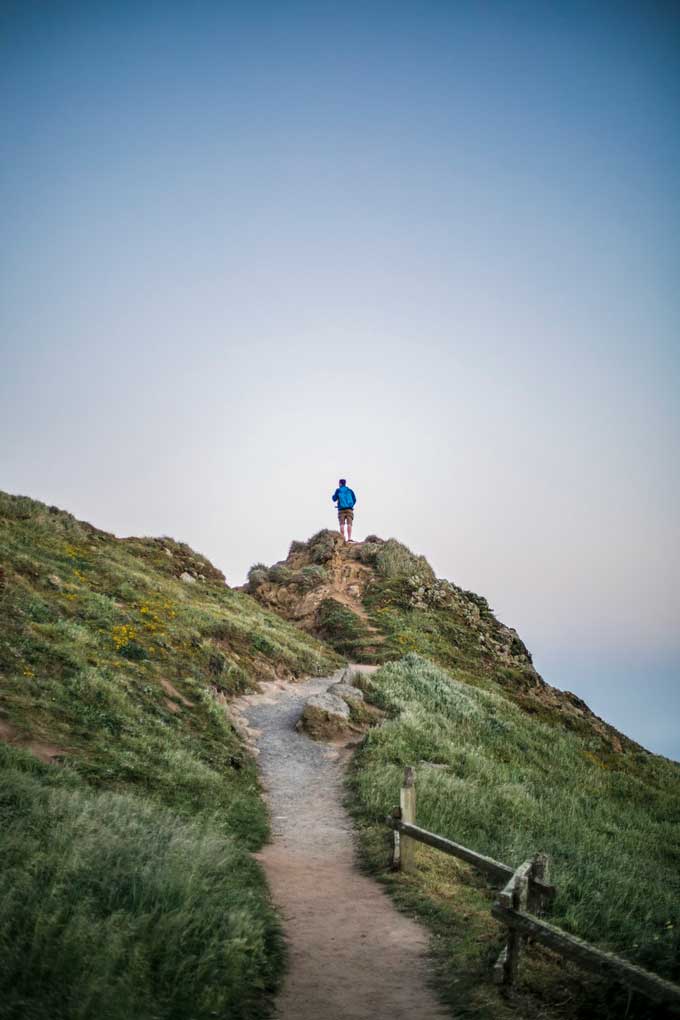Between us we've tried a whole bunch of outdoor clothing and we have a good idea of what's great and what's not. Read on for our top picks of shirts to keep you covered and cool on those adventures.
Whether you’re on the hill or hitting the shops, the Icebreaker 150 Big Tee packs a stylish punch. Made from 87% merino core spun wool, this relaxed fit t-shirt feels great against your skin. The unique design of the seams minimises chafing and even when slightly damp it feels dry to touch, so you’ll avoid that sweaty back sensation.
The high merino wool content helps keep you cool when things heat up, plus it’s 150gsm which keeps it light. Core Spun technology gives the Merino wool greater durability so this hiking shirt will be with you for many adventures to come.
Colour/pattern - drift and royal navy
Material - 87% merino wool 13% nylon
Style - short sleeve
With more technology than you can shake a walking pole at, the Columbia Silver Ridge long sleeve shirt features their signature Omni-Wick fabric which literally sucks moisture from your body so it can evaporate super-fast.
The casual fit helps you feel and look great on and off the trail, and the long sleeves add a layer of protection from the sun – you also get an impressive UPF 40 sun protection. The synthetic fabric has been treated with antimicrobial elements which helps prevent bacteria growth – one of the best hiking shirts for odor control.
Velco fastening breast pockets are handy for stashing keys and money.
Colour/pattern - fossil, white, black, city grey, sage, Columbia grey, olive green, elderberry, night shadow, red jasper, steel
Material - 100% nylon
Style - collar, long sleeve
Pull on this hiking shirt for all your high-intensity activities - Patagonia’s lightest technical t-shirt keeps you cool with its excellent moisture wicking and fast drying properties. HeiQ odour control helps keep you fresh when you’re working hard - day after day. They’re made from 52% to 100% recycled fabric so you’ll be helping the environment to boot.
With a classic crew-neck design and sewn-in sleeves, the Capilene Cool is versatile and one of the comfiest hiking tees out there. It’s a little on the thin side when temperatures fall, so you may need an extra layer.
Colour/pattern - borealis green, black, fire, forge grey, superior blue, iggy blue
Material - up to 100% recycled polyester double knit
Style - short sleeve
Another one from the Icebreaker stable, the Tech Lite is a great versatile go-anywhere, do-anything hiking shirt. Just throw it on and you’re set for the day. It’s stretchy and highly breathable, plus it’s one of the best hiking shirts for odour resistance - your mates will thank you for wearing it.
The corespun wool construction means you’re dry in next to no time. Icebreaker reckon it’ll last a week without needing washing – multi-day hike anyone? If you're really serious about great gear for the trail, check out some of the best hiking socks to pair with your shirt.
With so many colours to choose from you’re bound to find a shirt to suit your taste.
Colour/pattern - black, gritstone heather, midnight navy, flint, brazilwood, awesome, rocket, shore, balsam, curry
Material - 87% merino wool 13% nylon
Style - crew, short sleeve
Get outdoors, active and sweaty with Columbia’s Zero Rules hiking shirt. This shirt literally has your back - the cooling fabric actually reacts with your sweat to lower temperatures and keep things cool even during the most strenuous workout. With a built-in antimicrobial treatment, you can enjoy that post-hike beer with confidence.
Colour/pattern - grey heather, stone green, bright indigo, black, azul, carbon heather, new olive, bright gold, wildfire
Material - 100% polyester ZERO interlock
Style - crew, short sleeve
If you prefer a synthetic hiking shirt then the Arc’teryx Motus may be the one for you. It delivers great performance when on the trail, whether you’re running or hiking. The trim fit, anatomical patterning and stretchy material helps the shirt to stick to your body which delivers a superior wicking process to help you keep your cool.
It comes in a variety of colours and you don’t need to worry about being caught out on the road at dusk – reflective blades help keep you seen.
Colour/pattern - remix, glade, black, ignite, limitless, beacon, iliad, robotics, utopia
Material - 100% bicomponent polyester fabric
Style - crew, short sleeve
A super light t-shirt with mesh panels under the arms which increases ventilation and lets your pits breathe. It’s slightly heavier and thicker than similar shirts, so would be a good option for early spring or late autumn or as an extra warm base layer.
Reflective inserts keep you safe at dusk and the fit is just right for freedom of movement – not too light and not too loose.
One of the fastest drying shirts out there.
Colour/pattern - ashley blue, white, black, night sky, vivid blue, balsam green, cherry tomato, blithe, goji berry, fiery red
Material - 100% polyester
Style - crew, short sleeve
The merino wool and nylon blend is super stretchy so moves with your body. It’s so soft and comfy you won’t even know you’re wearing it. Despite the stretchiness it retains its shape even after being worn for a few days on the trot and because it’s breathable it makes an excellent base layer.
The weight is comparable to a synthetic hiking shirt – it’s about a third lighter than standard merino shirts and is quick drying.
Colour/pattern - nickel, black
Material - Nuyarn – 57% nylon 43% merino
Style - crew, short sleeve
Another great option for warm hikes and runs, the Outdoor Research Echo is made from AirVent polyester fabric that’s light but breathable. As you’d expect from a shirt of this type, it’s fast drying and porous.
Raglan sleeves and flatlock seams keep the chafing at bay and you can wear it to the pub straight from the trail with confidence thanks to the Polygiene odour control. You also get some sun protection, although this isn’t as high as other shirts out there.
Colour/pattern - pewter/ chartreuse, baltic, black/ pewter, burnt orange/ paprika, pebble
Material - AirVent 100% polyester
Style - crew, short sleeve
Best for: multi- activities - Icebreaker Men’s Merino 150
Best for: extremely hot environments - Columbia Silver Ridge
Best for: trail runners - Patagonia Capilene Cool
Best for: long distance walkers and backpackers- Icebreaker Tech Lite Merino
Best for: moisture control - Columbia Zero Rules
Best for: ultralight hikers - Arc’teryx Motus Crew
Best for: those on a budget - Salomon Agile SS
Best for: comfort - Black Diamond Rhythm Tee
Best for: odour control- Outdoor Research Echo
Summer is finally here and lockdown is saying its (painstakingly slow) goodbyes, so it’s time to head out to the hills for some fun. Summer hiking can be hot work though, yes, even in the UK! There are few things worse than walking for miles with your back wet through with sweat and having to wring your shirt out every time you stop.
Or walking into the pub for the PWP (post-walk pint), fully aware that you’re giving off a bar-clearing odour. You’ll need a shirt that’s comfy and that’ll keep you cool and dry - the best shirts are quick drying, breathable and lightweight.
We’ve done our outdoor research on some of the best hiking shirts out there for your summer adventures. Don’t just keep them for warm weather - they’re so good they make cracking base layers for winter trips too.

Merino is used in many hiking shirts as it’s super soft yet breathable. It’s naturally antimicrobial meaning it’s great at reducing odours and keeping those pongy pits at bay - a merino shirt can be worn for days on the trail without being washed.
They’re quick drying so if some sweat does leak through it’ll dry before you’re even aware of it., whereas fabrics like cotton will absorb water instead of wicking it away from the body. However merino hiking shirts can be on the pricy side and can also be less durable. Some products with a high merino content can only be washed in cold water.
Many manufacturers get around this by adding nylon fibres to make them harder wearing. Now, you might think wearing wool in the summer is just plain wrong - we tend to associate merino wool products with warmth after all.
However, merino wool can actually make a great summer product as it can be knit very thinly – you’d be best choosing a hiking shirt with 150gsm – 200gsm (grams per square metre). The merino wool fibres also give a great natural protection against UV radiation – what can’t it do!
A lot of hiking shirts use core spun merino wool. This involves spinning the wool around a super-thin nylon core which creates something that’s stronger and more durable than traditional merino, but still keeps its qualities. Shirts with core spun merino tend to last longer and stand up much better to repeated washing.

Most synthetic shirts are made from polyester - it dries fast and absorbs less sweat than other fabrics. They’re not as soft as merino shirts, so may not be quite as comfy, but are generally cheaper. They are usually machine washable and can be washed more frequently than merino shirts.
Polyester shirts are often treated with an antimicrobial agent to give some defence against sweaty odours, but this can start to disappear after several washes.
Nylon is sometimes combined with polyester and merino to give a shirt the ability to stretch and to strengthen fabrics.
Some of the best hiking shirts have sun protection built in and the UPF rating indicates how much UV radiation it’ll protect against. The UPF rating can be affected by certain factors such as the type of fibre and the looseness of the weave. Sun protection can become less effective over time with repeated wear and washing.
Your shirt needs to feel comfortable from the moment you put it on. The best hiking shirts are those you don’t even know you’re wearing. Anything that doesn’t feel quite right in the comfort of your lounge will be amplified ten times when out on the trail. Check the fit – is it too tight? Too restrictive? Too loose? Having loads of spare material flapping around can be worse than not being able to move freely.
Nobody loves that chafing sensation of a raised seam rubbing your skin raw, so the best men's hiking shirts will have flat seams. The most popular type is a Flatlock seam, which has no layers underneath to irritate skin.

These are versatile, lightweight and generally wick away sweat. Made from both merino wool and synthetics, some have extra features such as pockets, mesh for extra ventilation and reflector panels.
Their downside is that they don’t protect your arms and neck from the sun or bitey insects.
These provide better protection for your arms, but they’re mostly either crew or V-neck so they won’t protect your neck. It’s also difficult to roll the sleeves back if you get really hot.
They may be more suited to slightly cooler weather, however many long sleeve T-shirts are breathable and have odour control built in. They're also a natural insect repellent, as they cover more of your skin (this will protect you from the sun, too)
A button-up hiking shirt has the advantage of letting you choose to let more air in by partially unbuttoning them. They usually come with long sleeves and a collar, which gives better protection from the sun and from insects.
Sleeves can usually be rolled back if desired and they often have other features such as a chest pocket or mesh panels.

If it's made from merino, you’ll need to handle it with slightly more care than a synthetic shirt. Merino shirts are best washed on cooler cycles with a medium spin. Try not to put them in a drier – excessive temperatures can shrink them faster than lockdown shrank the rest of our wardrobe.
Due to the antimicrobial properties of merino wool they don’t need washing as often as synthetic shirts. Washing them only when they really need it will extend their life.
Don’t use fabric softeners to wash hiking gear, they block the tiny pores which give them their wicking properties. It’s a good idea to wash your sweaty hiking gear as soon as possible instead of leaving it to fester at the bottom of the laundry basket – the odour will fester and be much more difficult to get out. If you can’t wash your gear straight away, hang it up to let it dry out.
Synthetic shirts can generally be washed on a normal cycle, ideally around 40C. Again, avoid putting them into the drier if you don’t want them to shrink. Both Merino and synthetic shirts are pretty quick drying – don’t hang them up if they’re wet from the machine though as they could stretch out of shape. Lie them out somewhere flat instead.
Check out the washing instructions for each shirt on the label to be on the safe side.
Obviously, it's completely up to you, but if you're somewhere with lots of bugs, a long-sleeve hiking shirt will act as a natural insect repellent. Shirt-sleeves would be cooler in hotter weather, but would protect your arms less from the sun and of course, don't forget the farmer tan lines.
Of course you can! But if you're going on a long distance walk or just do a lot of backpacking trips, it might get to the point where you think it's worth investing. A normal shirt will do the trick just fine, but it won't necessarily be the best at temperature regulation, odour resistance or drying quickly.
The best material in our opinion is merino wool. Polyester and other synthetics do the trick just as well, but merino wins our vote for a being a lot more sustainable and kind to the environment, and a lot more durable too.
The best hiking shirt for you will largely be a matter of personal choice and what you’ll be using the shirt for. If you’re going somewhere hot, or you’ll be doing lots of high-intensity stuff such as trail running, you’ll need a shirt that sucks the sweat from your body, like the Patagonia Caprilene Cool.
If you’re back-packing along a long trail, you’ll want a shirt you can wear for days without washing, so the Icebreaker Tech Lite may fit the bill nicely. Going to be camping? Check out our best tent brands and shelters for a good night's kip.
Walking somewhere slightly cooler or feel the cold? You’ll appreciate the extra warmth of the Salomon Agile.
You’ll also need to think about the fit of your shirt. Some are designed to cling to the body, whereas others give a much looser fit for greater freedom of movement. It depends on what feels best for you. You also need to consider whether you prefer a short or longer sleeve shirt.